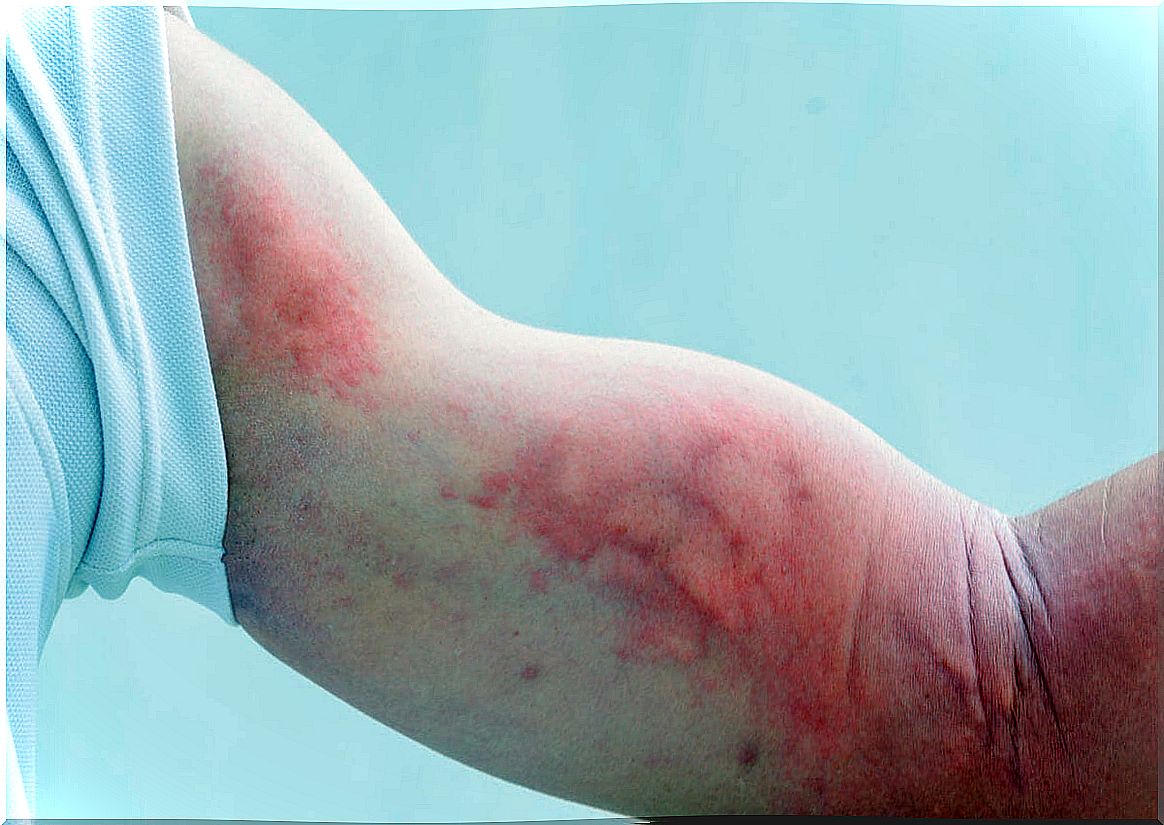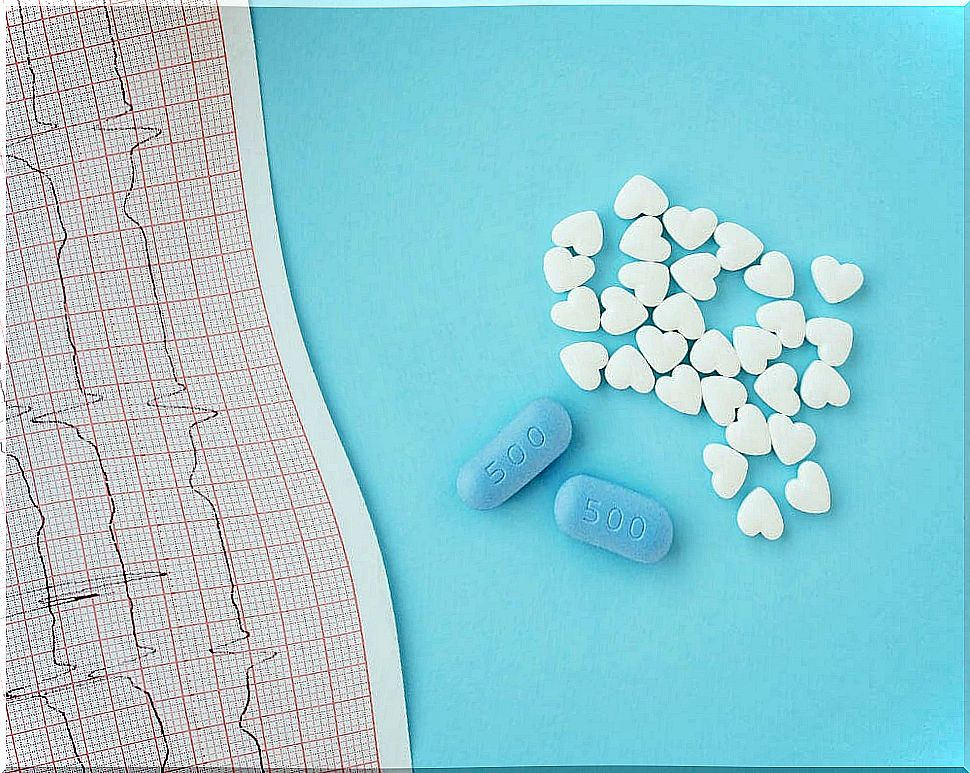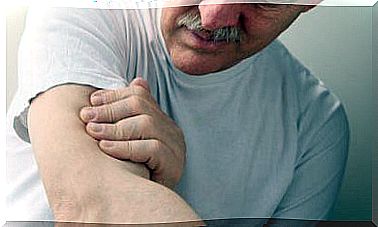What Is Angioedema?
The term angioedema refers to inflammation (edema) of the skin, mucosa, and submucosal tissues of the patient. In this clinical picture, the face, lips, tongue, larynx, extremities and practically any part of the body can be seen asymmetrically involved. It is associated with allergic conditions, but this is not always the case.
In the United States, approximately 100,000 patients present to emergency departments annually with clinical signs of angioedema; in many cases, associated with an allergic-type disorder. The World Allergy Organization estimates that 20% of the world’s population suffers from hives or angioedema at some point in their life.
Angioedema that does not involve the respiratory system is usually uncomfortable, but relatively harmless. However, if airway blockages occur, the patient’s life can be in serious danger. If you want to know everything about this complex and interesting clinical entity, keep reading.
What is angioedema and what are its types?
As we have said, angioedema is the swelling of the most extensive areas of the subcutaneous tissue, which usually affects the face and sometimes the throat. It is a reaction similar to hives (only more internalized) and often occurs alongside it.
The mechanism that activates angioedema is related to histamine or bradykinin. Histamine is an imidazole amine involved in allergic responses that, in this clinical picture, are caused by insect bites, drugs, foods, and other potential allergens.
On the other hand, bradykinin is a physiological peptide that causes vasodilation. In the case of angioedema, the version related to this substance is usually hereditary, due to the consumption of certain drugs or lymphoproliferative diseases (abnormal production of lymphocytes).
There are various types of angioedema, depending on the causative agent and the physiological nature of the event. Thanks to the information provided by the Missouri Medicine portal and other sources, we tell you its peculiarities.
1. Acute allergic angioedema
In this case, angioedema occurs directly and acutely by the activation of mast cells, specialized cells of the immune system. When immunoglobulin E (IgE) antibodies – membrane receptors on these cells – bind to an allergenic substance, the mast cell releases mediators of the allergic response, such as histamine.
The histamine released in the dermis of the skin causes vasodilation and extravasation of the intravascular fluid, which favors the formation of the edema itself. This reaction is very similar to that of urticaria, but in the latter case the immune response is more superficial and occurs near the pain receptors, so it manifests itself with itching.
As you can see, we are describing a typical allergic reaction. In this case, angioedema usually appears together with hives within 1 to 2 hours of exposure.

2. Nonallergic angioedema
This clinical picture is different from the one previously described, since it does not manifest with simultaneous urticaria and itching. In nonallergic angioedema, there is an increase in circulating bradykinin, which results in vasodilation and extravasation of fluids, causing the swelling that characterizes it.
Angiotensin converting enzyme (ACE) inhibitors are usually the main causative agents of nonallergic angioedema. Angiotensin converting enzymes degrade bradykinin and, as they are inhibited by these drugs, can promote the accumulation of this peptide.
These drugs are used to treat hypertension. It is not yet known why some patients respond well and others develop angioedema.
3. Idiopathic angioedema
On this occasion the cause of the pathology is not known. As indicated by the DermNet portal , recent studies estimate that 30 to 50% of cases could be associated with autoimmune disorders, such as systemic lupus erythematosus. However, no reliable etiological agents are found.
4. Hereditary angioedema
This pathology is hereditary, following an autosomal dominant mechanism, that is, linked to non-sexual chromosomes and with dominance over its sister allele. It can be secondary to failures in the F12 gene, in chromosome 11, or to mutations in other regions of the patient’s genome.
For example, the lack of circulating C1 inhibitors in the blood results in an increase in bradykinin, which causes symptoms such as that seen in non-allergic angioedema. There are quite a few inherited types and they occur in 1 patient in 50,000 people.
Causes
Describing the types of angioedema, we have been dissecting some of the causative agents. In any case, the Mayo Clinic and other medical portals help us to generate this list with the most common triggers of the disease:
- Allergens: insect bites, materials made with latex, food allergies, allergies to drugs such as penicillin, vaccines, and some drugs can cause an allergic response leading to angioedema.
- Angiotensin Converting Enzyme Inhibitor Drugs: They do not cause allergies by themselves, but they can lead to angioedema without itching or hives. They are used to treat high blood pressure.
- Heredity: as we have said in previous lines, multiple heritable mutations can lead to hereditary angioedema.
- Diseases: lymphomas and other malignant pathologies can trigger acquired angioedema.
In any case, as we have already said in previous lines, histamine and bradykinin are the main causative agents of this type of disease at a physiological level. While allergic responses are often accompanied by hives, hereditary and nonallergic responses are not.
What are the symptoms?
The symptoms of a patient with angioedema will depend on the causative agent. In any case, the sources already cited collect clinical signs common to practically all the variables. They are as follows:
- A locally marked swelling around the eyes and lips. The throat, hands, genitals, tongue, and other areas can also swell.
- The inflammations are sometimes painful and turn pale in some cases. In allergic conditions, edema is usually accompanied by superficial urticaria that causes itching and redness of the epidermis. Pain and heat in the affected areas are typical.
- When the allergic reaction is severe, the patient may have difficulty swallowing and breathing. This is due to an inflammation of the throat tissue.
- As with any allergic reaction, there is also the risk of anaphylactic shock. The drop in blood pressure in this severe clinical picture is life threatening.
The increase in dermal inflammation does not usually last more than 72 hours, with a complete return to normal once the clinical picture is reversed. Thus, angioedema is not usually considered serious unless some of the critical events listed are present.
How is it diagnosed?
As indicated in the MSD Manuals, the diagnosis of angioedema is usually quick and easy. In general, the patient will be able to link the allergic reaction with a previous event, be it the taking of a drug, the bite of an insect or the consumption of a food. Therefore, establishing causality is easy in the vast majority of cases.
If the cause is not identified based on an allergen or drug treatment, it is time to go for a blood test. It measures the concentration or activity of C1 inhibitors, whose function is inversely proportional to the presence of bradykinin.

What are the treatments available?
Anti-itch and anti-inflammatory drugs are the first routes of action in patients with typical angioedema. As indicated by sources already cited, these conditions respond excellently to antihistamines, oral corticosteroids, and epinephrine. This last hormone is essential to treat serious anaphylactic conditions.
Fresh frozen plasma transfusions are useful in nonallergic angioedema, since they do not respond to usual medications. This solution is given by slow injection into a vein.
Sometimes angioedema is more than just an allergy
Most angioedema respond very positively to typical allergy treatments, but acquired or drug-mediated variants are not based on the same physiological premises as the typical form. For this reason, these types of patients require special attention.
If you have suffered angioedema after exposure to an allergen, the best recommendation we can give you is that you do everything possible not to expose yourself to it on future occasions. Check with your doctor about the substances that you should carry with you at all times if you are allergic to something, as they could save your life.









